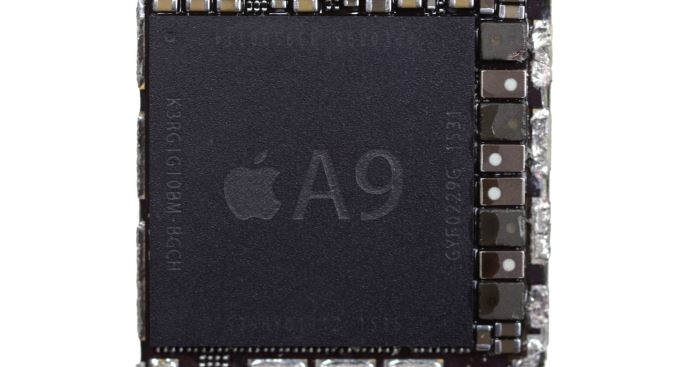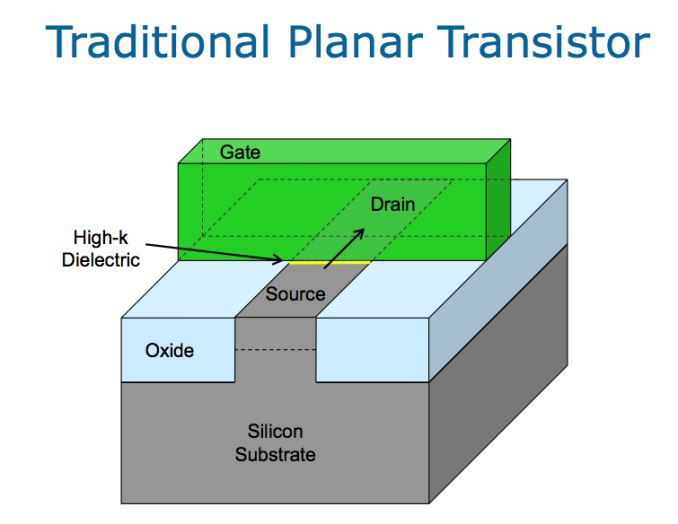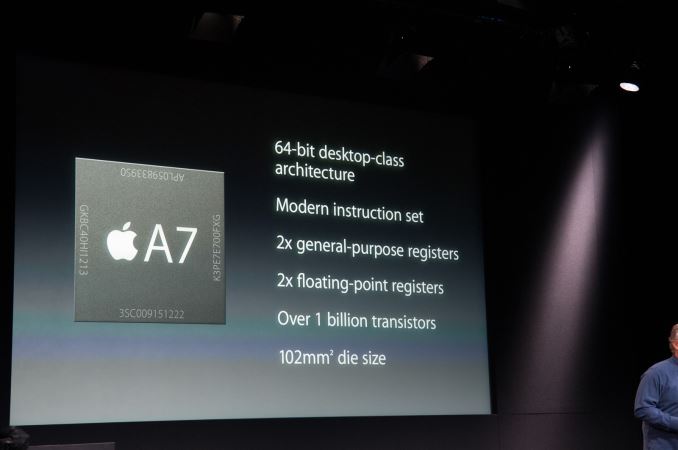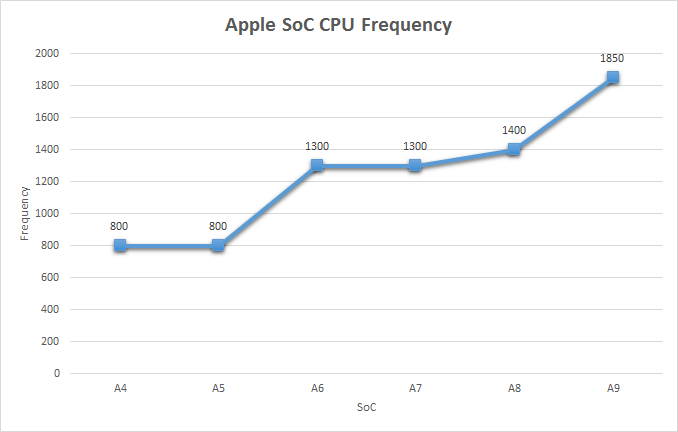The Apple iPhone 6s and iPhone 6s Plus Review
by Ryan Smith & Joshua Ho on November 2, 2015 8:00 AM EST- Posted in
- Smartphones
- Apple
- Mobile
- SoCs
- iPhone 6s
- iPhone 6s Plus
Analyzing Apple A9’s SoC
For Apple’s engineering teams, I’m still undecided whether Apple’s tick-tock style of SoC development is a curse or a blessing. That Apple more strongly invests in SoC development for the iPhone-S processors is a blessing, as it gives the engineering teams a bit of time to breathe and to plan out major architecture shifts over two years. On the other hand even for non-S iPhones the engineering teams still need to deliver an amazing product – iPhone 5 and iPhone 6 were no slouches – so I’m not sure how much of a breather the engineering teams actually get. They may have two years to space some of their transitions, but they must continue to deliver a top-tier SoC every year.
When Apple released the A7 SoC alongside the iPhone 5s in 2013, they pulled off something that rocked the SoC industry. The Cyclone CPU core all but came out of nowhere, beating previous estimates for the first ARMv8 64-bit phone SoCs (by any vendor) by roughly a year. As a result the 64-bit transition became a lot more important a lot sooner than anyone was expecting, and to this date some of Apple’s SoC competitors are still trying to recover from the shock of having to scramble to go 64-bit sooner than they planned.
As for Apple’s engineering teams, that we’re on another iPhone-S year means that there’s quite a bit of pressure to pull off a repeat performance, and I suspect that pressure is internal as much as it is external. A7 brought with it Cyclone, a CPU that was not only 64-bit, but thanks to its exceptional (for a mobile CPU) issue width of 6 micro-ops, brought with it a huge jump in single-threaded performance. At the same time A7 also saw Apple transition to PowerVR’s Rogue architecture GPUs (PowerVR G6xxx), which was a similar jump in GPU capabilities and performance, along with setting the stage for Apple’s proprietary, low-level Metal graphics API. A7 was everything Apple needed and more, cementing Apple’s place as a top-tier SoC designer and laying the groundwork for the performance advantage Apple has enjoyed over the past two years.

Apple's A9 SoC (Image Courtesy iFixit)
For 2015 then and for their latest iPhone-S, Apple has once again turned out a new SoC. This brings us to the A9, and in a year with an iPhone-S and almost no external design changes to speak of, all eyes are on what Apple has devised to go inside their phones.
| Apple A9 vs A8 SoCs | ||||
| Apple A9 (2015) | Apple A8 (2014) | |||
| Manufacturing Process | TSMC 16nm FinFET / Samsung 14nm FinFET |
TSMC 20nm HKMG | ||
| Die Size | 104.5mm2/96mm2 | 89mm2 | ||
| CPU | 2 x Apple Twister ARMv8 64-bit cores |
2 x Apple Typhoon ARMv8 64-bit cores |
||
| GPU | IMG PowerVR GT7600 | IMG PowerVR GX6450 | ||
Finally Fabbed with FinFETs
When the iPhone 6 launched I spent some time talking about how for the A8 SoC, Apple finally reached the point where they were building SoCs on a leading edge manufacturing process. That process at the time being TSMC’s 20nm planar process. The fact that Apple was building on a leading edge process was important for two reasons: 1) It was a strong indicator of how serious they were about SoC production and how much they were willing to spend in order to achieve the best possible performance, and 2) it meant that Apple had finally completely climbed the ladder (so to speak) and wouldn’t be able to “exceed the curve” just by catching up on manufacturing technology. Post-A8, Apple can only improve their performance by improving their architecture, building bigger chips, and finally, jumping to newer manufacturing processes as they become available.
What wasn’t said at the time – due to the fact that no one outside the fabs was quite sure – was where Apple would go in 2015. Had you asked me in 2014 what I would expect the A9 to be fabbed on, I would have suggested another round on TSMC’s 20nm process now that Apple had caught up to the leading edge. However much to my surprise (and to a steak dinner I lost a bet on) Samsung was able to get their 14nm FinFET process yielding well enough to supply Exynos 7420 in bulk for the Galaxy S6 launch nearly 6 months ago.
The fact that one of the contract fabs was able to get a FinFET process up and yielding well enough for volume production before the very end of 2015 has definitely changed the picture for what Apple can do. Once again they get to jump to a new manufacturing process for their next SoC, though this time by staying on the leading edge.


Planar vs. FinFET (3D) Transistors (via Intel)
While I’m not going to go into the physics of FinFET in depth here – we have some great articles on that already – I do want to quickly touch upon why this is so important. 14nm (and 16nm) FinFET isn’t just a new manufacturing node, but it’s part of a broader change in how transistors are manufactured. Simply put, FinFET (aka 3D transistors) are a long in development technology meant to help transistors scale to increasingly small scales, on the order of dozens of atoms or less.
FinFET transistors are necessary because as transistors get smaller their leakage (wasted power) goes up, and without FinFETs leakage would spiral out of control. In fact that’s exactly what happened on the 20nm nodes from Samsung and TSMC; both companies thought the leakage of planar transistors could be adequately controlled at 20nm, only for leakage to be a bigger problem than they expected. Due in large part to this reason, the 20nm SoCs released over the last 18 months have more often than not struggled with power consumption and heat, especially at higher clockspeeds. Apple is something of the exception here, with the 20nm A8 proving to be a solid SoC, thanks in part to their wide CPU design allowing them to achieve good performance without using high clockspeeds that would exacerbate the problem.
That said, while Apple managed to handle 20nm well enough, they were still ultimately at the mercy of a subpar process. The 14nm/16nm FinFET processes are what 20nm should have been all along, with the use of FinFETs drastically cutting down on leakage and reducing operating voltages – and now that FinFETs are here Apple no longer has to be as conservative as they were with A8. What that gives Apple then is a chance to push the envelope much harder on clockspeeds, taking their already wide CPU designs and turning up the clockspeeds as well.












531 Comments
View All Comments
RealityMonster - Tuesday, November 3, 2015 - link
SIGH.The screen isn't 'low res'. The pixels on most Android phones are superfluous. They burn power and you can't see them at normal viewing distances anyway. The extra pixels aren't doing you any good. They're harder on the battery AND the GPU.
The SOC benchmarks are 100% consistent with every other benchmark I've ever seen anywhere. Per clock, the A9 is just the best SOC that exists right now. They really do have incredibly good chip designers working at Apple--Apple bought up a bunch of companies that mattered years ago and everyone was confused until they started cranking out stuff like this. I challenge you to create a real-world test where the A9 doesn't outperform its counterparts. Do you have any evidence to show that the SOC are somehow invalid?
The camera resolution is one of the least important things about the camera, and I wish everyone would stop banging on about the number of megapixels in phone cameras because it really just makes you look like you don't know what you're talking about. You know what other camera has a 12MP sensor? My Nikon D3s. If you try to tell me that a higher resolution sensor in a phone somewhere would take better pictures than my D3s, even if we somehow leveled the playing field in terms of lenses, you'll be laughed out of the room.
2GB of RAM is not the same sort of limitation under iOSs as it is under Android. The nature of virtual machines and garbage collection under Android means that you need a lot more wiggle room for the OS to function optimally.
I can't speak to how 'must have' faster LTE is (it's not, to me). My phone application sits in a folder on my second screen. It's so unimportant, it shares the folder with TimeHop. While it's a fair criticism that some people may care about that sort of thing, the 'phone' function of my iPhone is honestly almost an afterthought.
No micro SD is common across smartphones, and I would consider having it something that you would grade other phones UP for as a nice option, rather than grading any phone without it down. The cost of extra storage is a fair cop; 16GB devices shouldn't even exist anymore, especially if you're going to make each photo take up twice as much space by default, and let the device record 4k video. The proprietary connector is a BETTER connector, but has no real bearing on anything. You get a cable with the phone, they're cheap to buy if you need more. It's the lamest of complaints.
If you want an iOS 9 review, that's something else. This is a review of the iPhone 6s(+). The limitations of the software aren't meaningful when discussion the build of the hardware.
toukale - Monday, November 2, 2015 - link
Why would anyone be shocked at this point. And with the iPad Pro around the corner, Apple have cemented themselves at the best mobile design house on the planet. I never though I would be writing those words a few years ago.Chaser - Monday, November 2, 2015 - link
I know what you mean. I recently had the opportunity to purchase a new tablet. Phone wise I have been an Android man for years. But tablet wise I did my research and the iPad Air 2 has no competition. It is a quick and easy go to device that a a tablet should be with unparalleled development. can't believe I am saying that today. Can't believe i bought one but for a tablet, I love it!jospoortvliet - Wednesday, November 4, 2015 - link
I wouldn't go for an Apple tablet actually. I'd buy a much lighter Sony, I think. But the 6s - I really hope the Android ecosystem gets its act together next year so I can buy a successor to my m7.duploxxx - Monday, November 2, 2015 - link
love the final words. This phone does excel in every possible theoretical benchmark there is :) Uber usage of nand (sequential....), power consumption, graphics etc and mainly ............ price.But then you take the reality benches and final results of real measurable tools and then its all up and downs with other devices out there. Not to mention that optimized IOS sw ends when the apple device is +2y old. it becomes a forced sluggish replacement.
looking at those results, knowing the price of this device it does not come even close to being gold. it should be silver just by the fact of its high price tag. Reality shows that for example the One plus being "old device" with a good balanced pricetag and nice performance scores in most testing is a way better bargain then this piece of fruit. Yeah you can use it as a scale. Its just forcetouch requirement because of the lack of IOS buttons and features. after owning 2 apples, never again for me.
V900 - Tuesday, November 3, 2015 - link
LOLOLOL!Of course.. When the tests and benchmarks put the new (AS WELL as last year's iPhone) above all other handsets, There's not much left for you to do, than just make up some arguments against iPhones.
Like that "optimized software ends after two years". Sure you can't use the newest features on your old phone.
But where Android handsets rarely see updates after a year, and usually get too slow and crufty for everyday use after two years, you see iPhones get updates for 3-5 years after release, and be perfectly fine and fast for their purpose.
My friends 10 year old son just got his 6 year old iPhone 3GS for his first phone. When was the last time you saw a 6 year old Android handset in use?
Heck, when was the last time you saw a 2-3 year old Android phone in use, that delivered a bearable performance?
Compare that with the tens and hundreds of 4-5 year old iPhone 4/5s that you see everyday still in use, and almost as zippy as when they came out? You get what you pay for.
darkich - Tuesday, November 3, 2015 - link
"Heck, when was the last time you saw a 2-3 year old Android phone in use, that delivered a bearable performance?"Now that is such aa ridiculous load of BS right there.
How about you read the first paragraph of the review and then inform yourself on how old the HTC one M7 is.
I myself feel the same as the author, having a 2 year old Note 3.
Nothing released so far makes me want to invest in a new device since the Note 3 still serves me remarkably well.
Heck, it actually performs BETTER than it did when it was new!
There were some issues with the transition from kitkat to Lollipop, probably because of the application needing time to optimize for ART.
But now, everything is a breeze.
I bought a new battery 3 months ago, and even that part (battery endurance) is better now than it was when my phone was brand new!
What makes that that more impressive is the fact that I'm actually using 100% out of my phone, having over hundred apps on it and doing stuff you wouldn't believe we're possible on a pocketable device - using it as a pc replacement, even for video editing and 3D modelling.
If you want evidence, just let me know.
V900 - Tuesday, November 3, 2015 - link
Why would a higher price than a mid-grade One+ detract from the score?!?You do understand that most markets are divided into low end, middle and highend? Right?
Android phones exclusively rule the low end, most of the mid end, and little of the high end.
Since the iPhone is a premium product, regularly reviewed as the best on the market, naturally it has a higher price than a mid end One+ that doesn't deliver close to the premium experience an iPhone does.
Would you also insist a BMW has to have a score deducted, because it's more expensive than a Kia?!?
krumme - Monday, November 2, 2015 - link
What about weight??6s plus is between a note 5 and 8 inch tab s2 !
Its a brick. Nokia style.
And the little comment about contrast is imo not consistent with real world experience.
Wait untill apple gets oled and the tone will shift.
Uncritical review.
iSeptimus - Monday, November 2, 2015 - link
Been waiting for this review. Always interesting to see this sites in depth reviews, for any phone.Lot of butt hurt Android users in the comments already. Is it really so bad that it's a good phone?